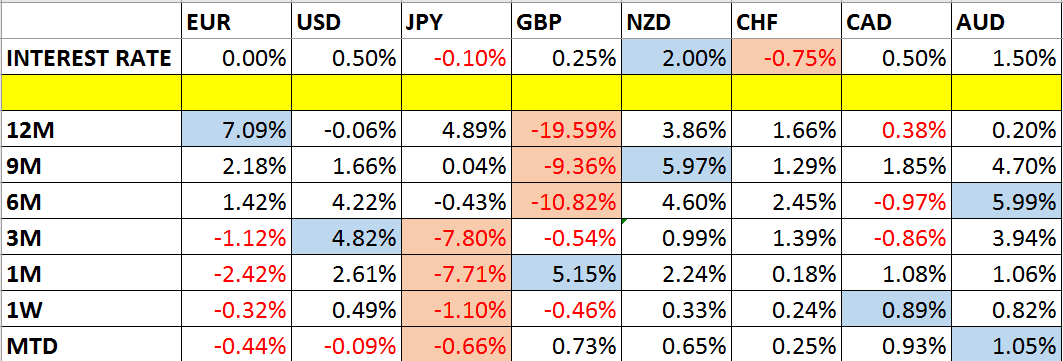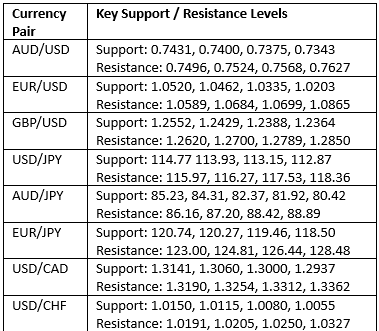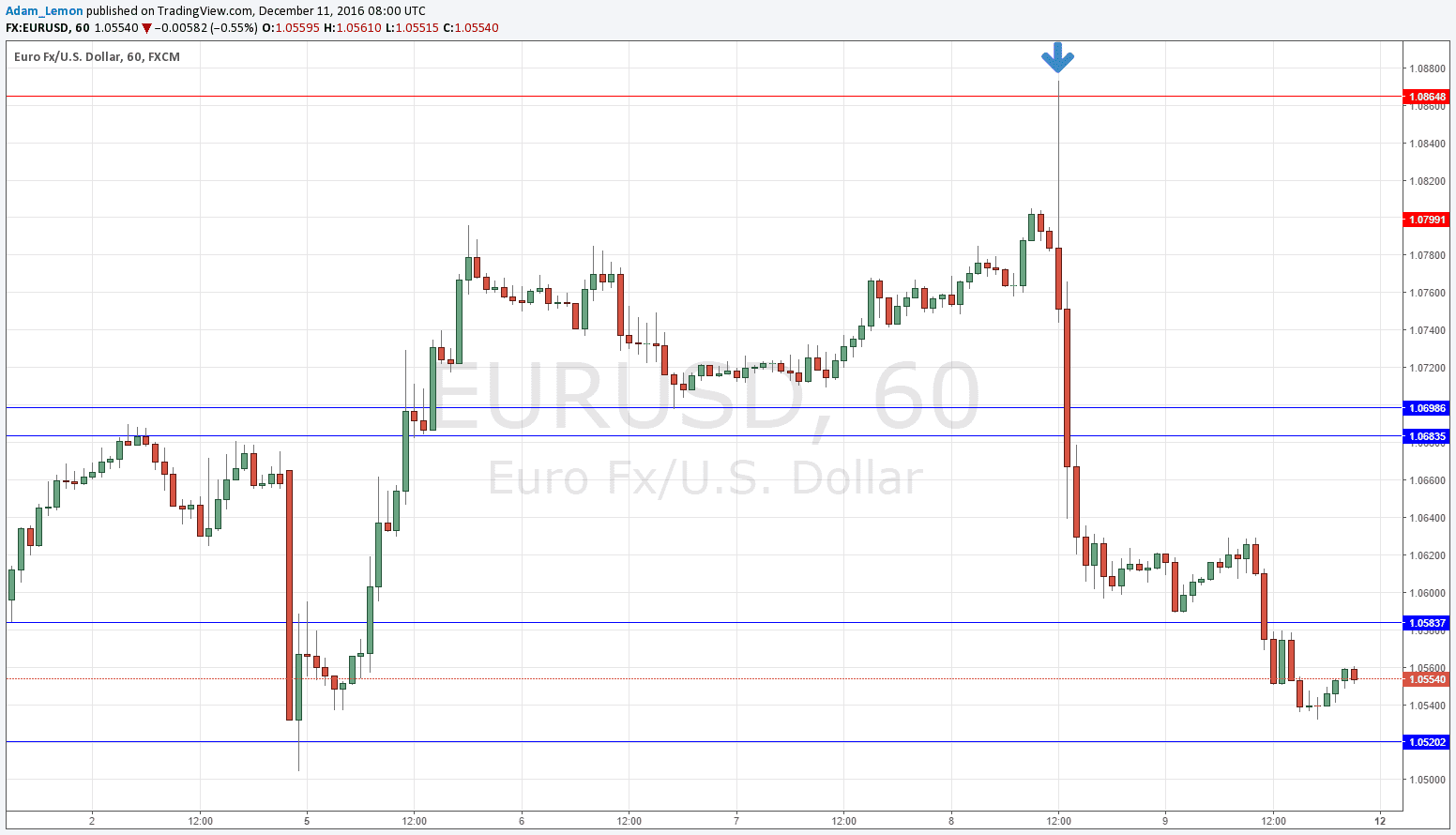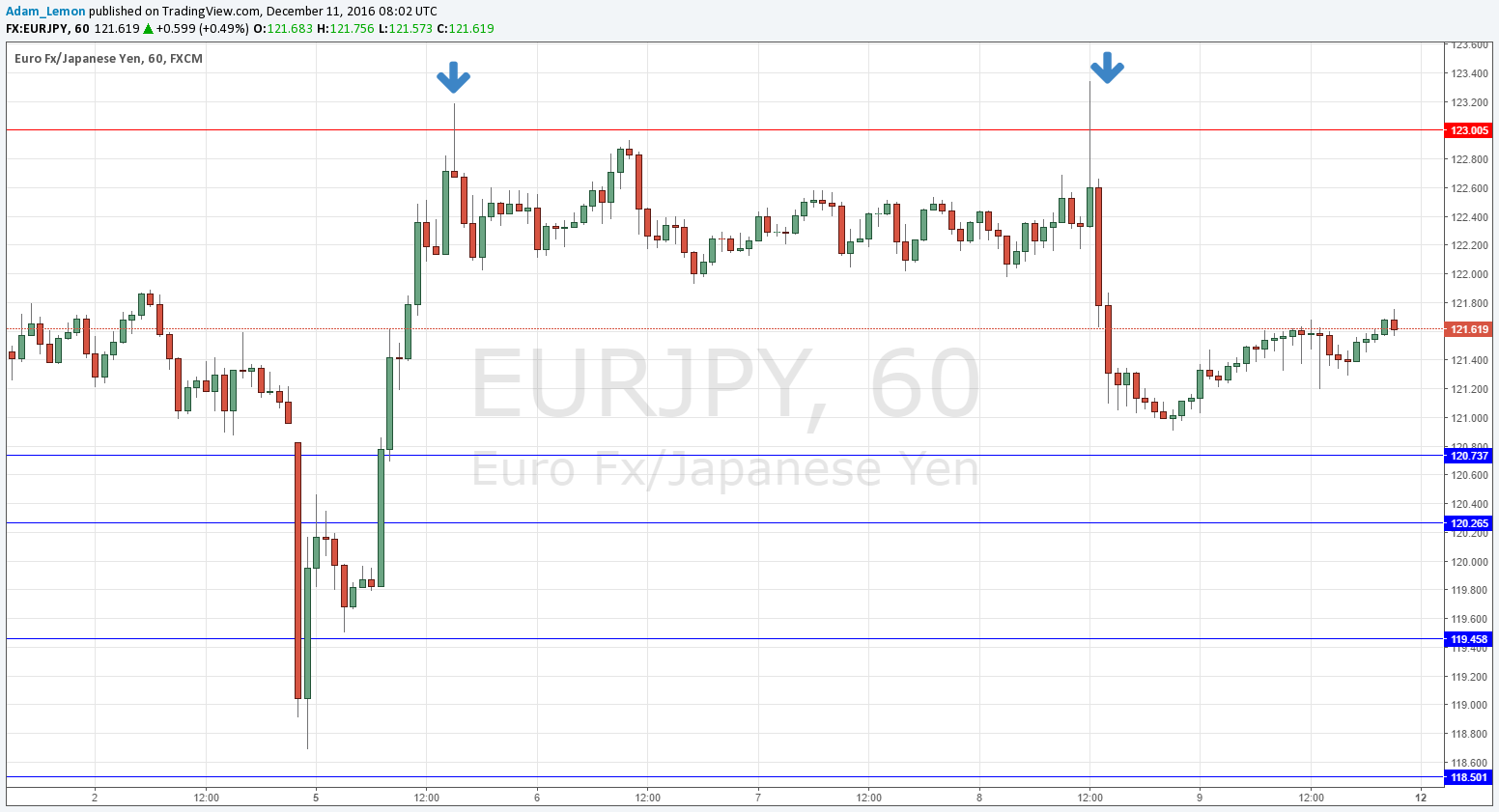This week we’ll begin with our monthly and weekly forecasts of the currency pairs worth watching. The first part of our forecast is based upon our research of the past 11 years of Forex prices, which show that the following methodologies have all produced profitable results:
Trading the two currencies that are trending the most strongly over the past 3 months.
Assuming that trends are usually ready to reverse after 12 months.
Trading against very strong counter-trend movements by currency pairs made during the previous week.
Buying currencies with high interest rates and selling currencies with low interest rates.
Let’s take a look at the relevant data of currency price changes and interest rates to date, which we compiled using a trade-weighted index of the major global currencies:
Monthly Forecast December 2016
This month we forecasted that the highest-probability trade will be long USD/JPY. So far, this trade has performed positively, as shown in the table below:

Weekly Forecast 11th December 2016
Last week ago, we made no forecast.
This week, we again make no forecast, as there were no strong counter-trend movements.
This week has been dominated by relative strength in the Australian and Canadian Dollars, and relative weakness in the Japanese Yen. It is the weakness of the Yen that stands out most strongly.
Volatility was less than it was last week, with 44% of the major and minor currency pairs changing in value by more than 1%. Volatility will probably be higher over this coming week, as there is a heavy news schedule, including input from several major central banks.
You can trade our forecasts in a real or demo Forex brokerage account.
Key Support/Resistance Levels for Popular Pairs
We teach that trades should be entered and exited at or very close to key support and resistance levels. There are certain key support and resistance levels that should be watched on the more popular currency pairs this week, which might result in either reversals or breakouts:
Let’s see how trading two of these key pairs last week off key support and resistance levels could have worked out:
EUR/USD
We had expected the level at 1.0865 might act as resistance, as it had acted previously as both support and resistance. Note how these “flipping” levels can work well. The H1 chart below shows the how the price hit this level during the London/New York session overlap last Thursday just after an important announcement by the ECB, a time which can be crucial for this currency pair. Entry was signaled by the very large bearish engulfing candle which formed immediately as the price was hit, marked by the down arrow within the chart below. This short trade gave a maximum reward to risk ratio of a little less than 2 to 1 so far, if the stop had been placed just above the swing high at the entry candlestick.
EUR/JPY
We had expected the level at 123.00 might act as resistance, as it had acted previously as both support and resistance. Note how these “flipping” levels can work well. The H1 chart below shows the how the price hit this level twice last week, rejecting it each time. The second possible entry marked by the second down arrow was by far the better entry, and was simultaneously with and followed a very similar course to the short entry described previously for EUR/USD.
You can trade our forecasts in a real or demo Forex brokerage account to test the strategies and strengthen your self-confidence before investing real funds.




